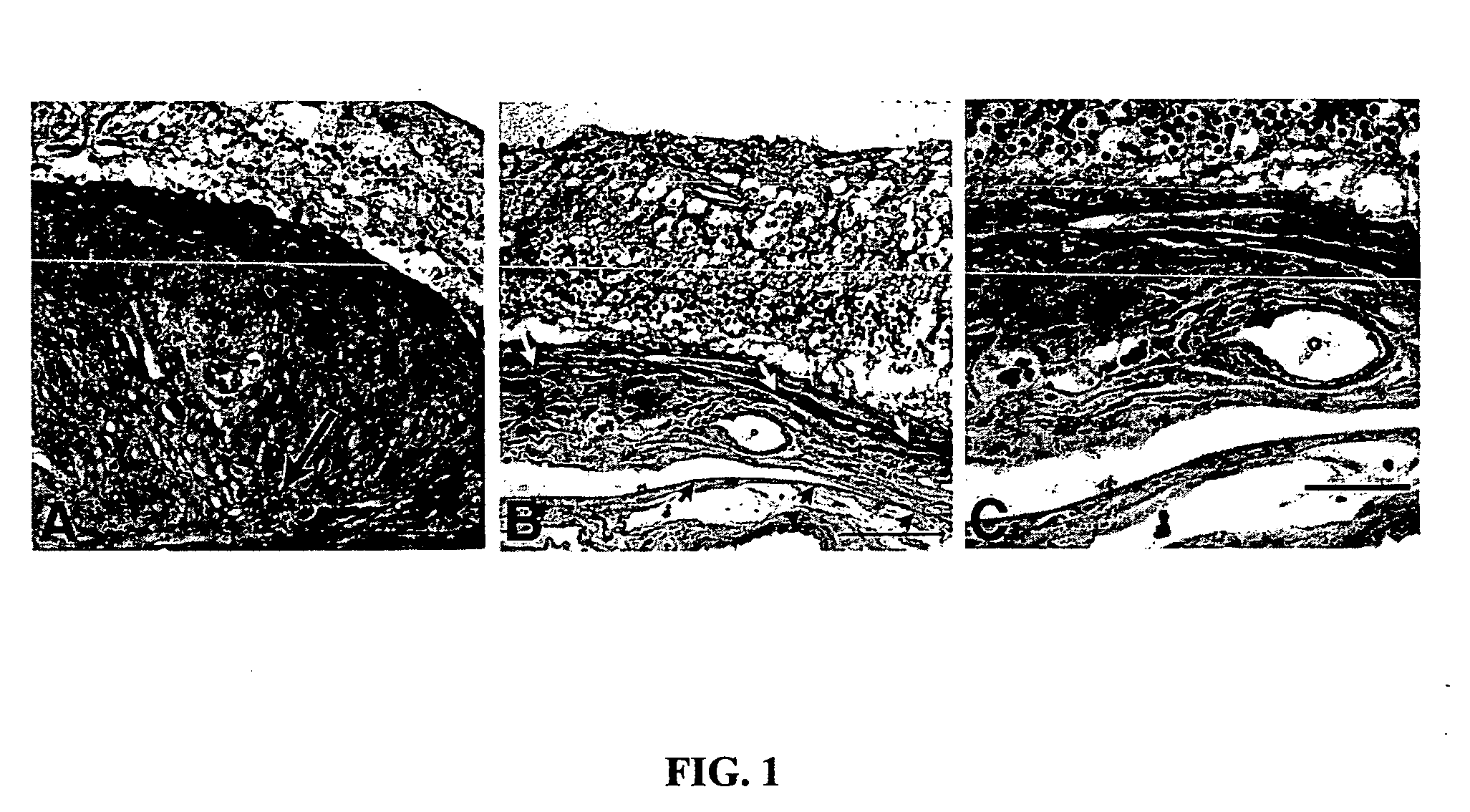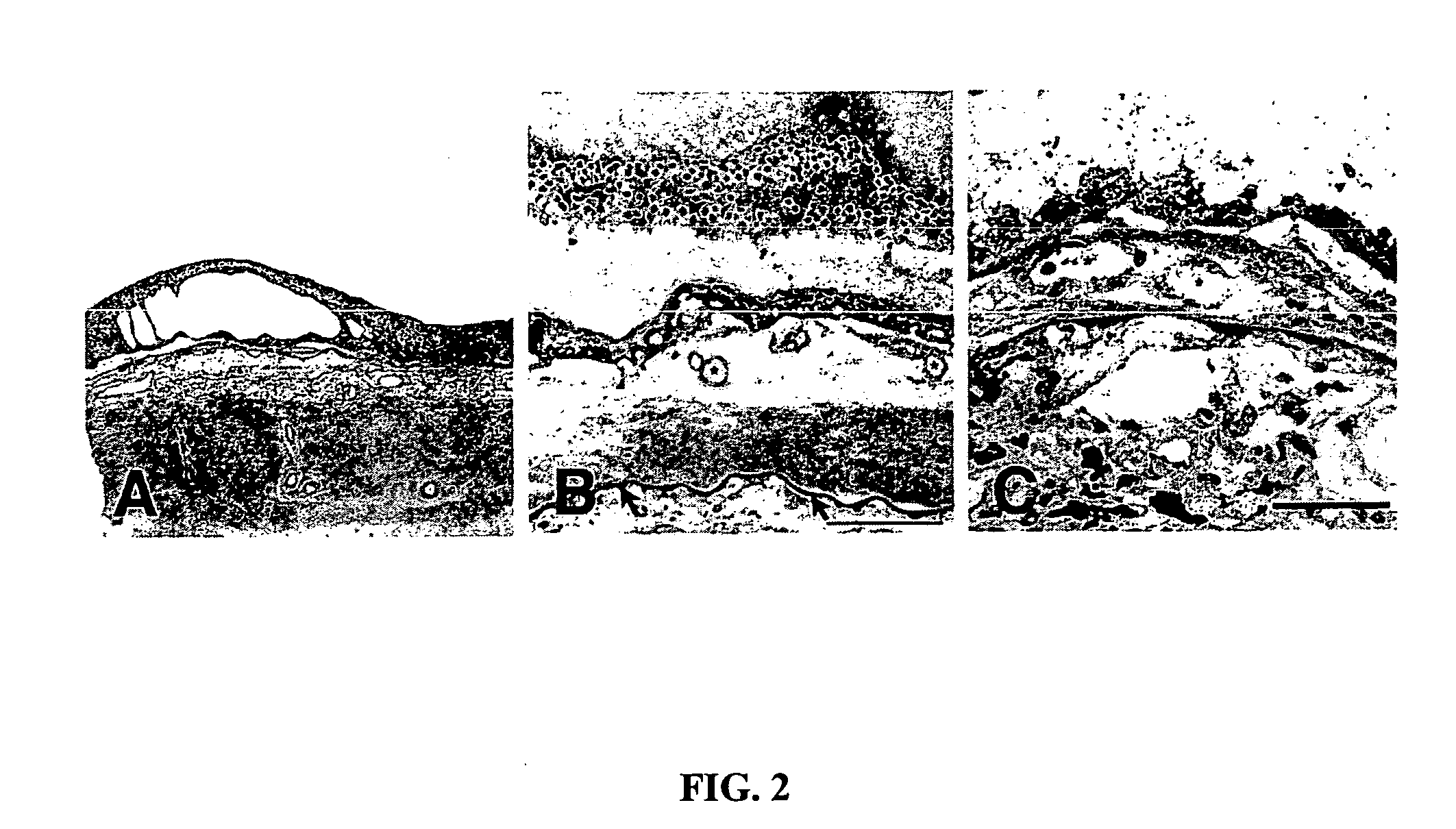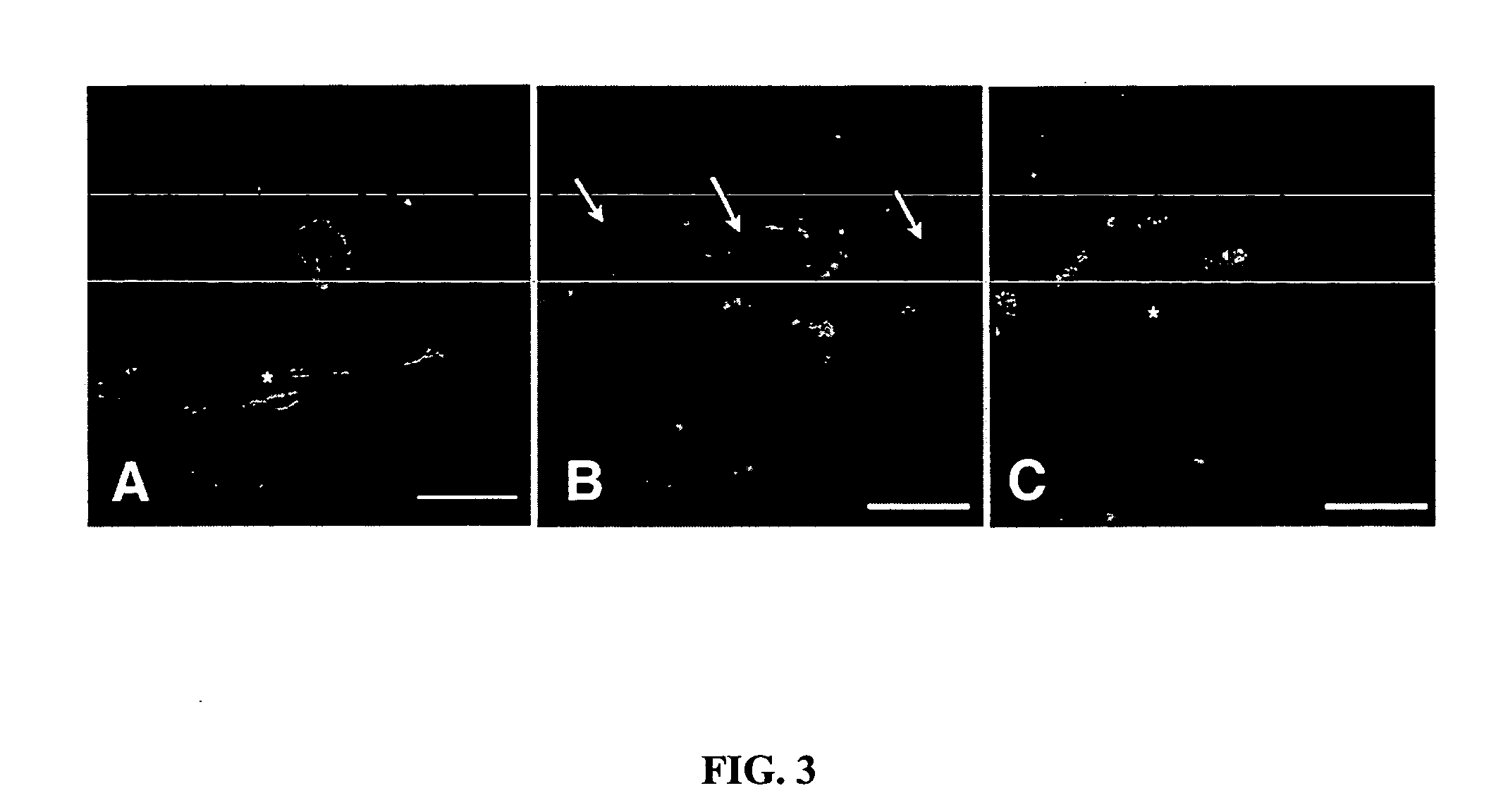Lectin binding to choroidal neovascularization
a choroidal neovascularization and lectin technology, applied in the field of opthamology, pathology and biochemistry, can solve the problems of severe visual loss in the developed world, and affecting the clinical effect of choroidal neovascularization
- Summary
- Abstract
- Description
- Claims
- Application Information
AI Technical Summary
Benefits of technology
Problems solved by technology
Method used
Image
Examples
example 1
Materials and Methods
[0065] Aged donor eyes from 3 individuals with CNVMS were received from the Iowa Lions Eye Bank (Iowa City, Iowa). Eyecups or macular punches were either fixed (cases 1 and 2) or were embedded unfixed (case 3), as described below. Eyes were fixed by immersion for 2 hours in 4% paraformaldehyde solution diluted in 10 mM phosphate buffered saline, pH 7.4. Eyes were fixed within 5 hours of death. Maculae were washed in PBS and were then infiltrated and embedded in sucrose solution Barthel and Raymond, 1990). The maculae from these eyes were serially sectioned on a Microm HM505E cryostat and employed in the lectin histochemical study. Labeling patterns of the CNVMs in these eyes were compared with the patterns in normal retinal and choroidal endothelial cells (ECs) in these same eyes.
[0066] In order to determine whether the sucrose infiltration and embedment affected the pattern of labeling, a third eye with subRPE CNV (case 3) was embedded unfixed in optimal cutt...
example 2
Results
[0071] The three eyes with neovascular membranes and disciform scars showed features typical of those described in the literature for CNVMs associated with AMD (Small et al., 1976; Green et al., 1985; Bressler et al., 1992; Sarks et al., 1997; Grossniklaus et al., 2000) reviewed in Green (1999).
[0072] In case 1, a large, compact subfoveal scar was noted that was eosinophilic and stained blue on MT stain, suggesting a significant amount of collagen (FIG. 1A). The scar contained fibrovascular material that was present on both sides of a detached layer of basal laminar deposit with a discontinuous RPE layer on its inner surface. Islands of RPE were noted within the scar, as were rare vessels (FIG. 1A). Photoreceptor degeneration was noted above the scar, and several rosettes were present in the overlying retina. At the temporal edge of the scar, a flat layer of active blood vessels was noted lying between the outer aspect of Bruch's membrane and the degenerated RPE (FIGS. 1B-C...
PUM
| Property | Measurement | Unit |
|---|---|---|
| Acceleration | aaaaa | aaaaa |
| Acceleration | aaaaa | aaaaa |
| Time | aaaaa | aaaaa |
Abstract
Description
Claims
Application Information
 Login to View More
Login to View More - R&D
- Intellectual Property
- Life Sciences
- Materials
- Tech Scout
- Unparalleled Data Quality
- Higher Quality Content
- 60% Fewer Hallucinations
Browse by: Latest US Patents, China's latest patents, Technical Efficacy Thesaurus, Application Domain, Technology Topic, Popular Technical Reports.
© 2025 PatSnap. All rights reserved.Legal|Privacy policy|Modern Slavery Act Transparency Statement|Sitemap|About US| Contact US: help@patsnap.com



